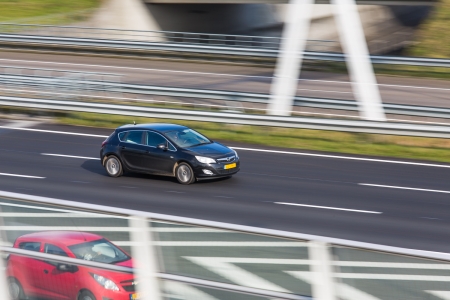General limits
Drivers in the Netherlands need to know the general limits in the urban and rural areas and to comply with them. Explicit limit signs are not required; they may be deduced from other signs, such as those marking the boundaries of the urban area (H01/H02), start or end of the trunk road (G03/G04) or motorway (G01/G02). By special lines and markings (essential recognisability characteristics), information about road type and the associated required (speed) behaviour can be supported ([23]; see SWOV fact sheet Principles for safe road design).
|
Start/end of urban area: |
|
|
|
Start/end of trunk road: |
|
|
|
Start/end of motorway: |
|
|
Other limits
Other speed limits are indicated by signs along the road (start: A01; end: A02) or above the road. If the limit is time-varying, this is indicated by a supplementary plate below the speed limit sign. Sometimes, information about speed limits is also indicated by hectometre signs (BB07) and, increasingly, in cars, generally by means of a navigation system. The limit indicated by the navigation system is, by far, not always correct and (therefore) not legally valid.
Advisory speeds
Apart from signs indicating formal maximum speed, there are also signs indicating advisory speeds (A04) and end of advisory speeds (A05). These are local signs, for example for indicating a dangerous curve or other road danger. These signs advise road users and do not impose obligation.
|
Limit signs: |
|
|
|
Hectometre signs: |
|
|
|
Advisory speeds: |
|
|











